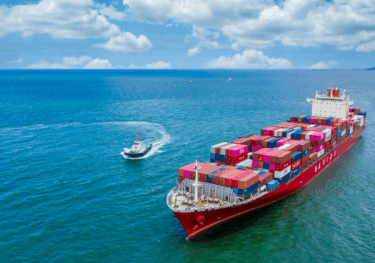Consulting Report | 31 Jan 2024
Navigating maritime challenges: forecasts for the UK maritime sector

The marine industry makes a major contribution to the UK economy, supporting both economic activity and employment, and is also economically important for the role it plays in boosting connectivity, bringing trade, tourism, and energy to the UK. In the past couple of years, however. the 1,400 UK firms operating in the UK maritime sector have faced a number of challenges. All have been at the mercy of the Covid-19 lockdowns and the volatility in fuel prices. Furthermore, global container lines have experienced swings in the rates they receive, which will come under pressure in the future due to the increase in capacity. Sanctions and geo-political issues continue to interfere with sea routes. Labour issues and regulatory pressures will complicate operations in future years. Much of the regulatory pressure will focus on the environmental impact of the sector.
Our central forecast is that the UK water transport sector’s production (in real terms) contracted by 8.5% in 2023. Ignoring the Covid-19 pandemic, this would be the sharpest contraction since 2016. This mostly reflects the decline in the value of goods exported out of, and imported into the UK, which are predicted to decline by 4.7% and 7.2% in the year respectively. The rate of growth of the water transport sector’s gross value added is forecast to contract less in 2024, only by 0.4%, and is expected to grow by 0.8% in 2025.The water transport sector’s output is sensitive to cyclical developments. The report explores what will happen to water transports’ gross value added? under two adverse macroeconomic scenarios using Oxford Economics’ Global Economic Model. An asset price crash scenario has more negative consequences for water transport sector’s contribution to GDP than a credit crunch.
The experts behind the research
Our Industry Consulting team are among the world’s leading analysts of a variety of industrial sectors. They combine their expert insight with our state-of-the-art economic models and tools to answer the crucial questions facing our clients.

Andy Logan
Director of Industry Consulting
Tags:
Recent related reports

US supply-chain stress eases as front-loading pressures fade
The reversal of tariff-related front-loading pressures continues to offer relief to our supply-chain stress index.
Find Out More
Trade tracker – Tariff impacts continue to build
US tariff rates are climbing to levels not seen since the 1930s, with world trade expected to decline and inflation set to rise. What could this mean for global markets and economic growth?
Find Out More
US tariffs and the uneven impact across cities in Europe and Asia
The latest US tariffs are reshaping global trade patterns, hitting some cities harder than others. From Germany’s auto hubs to China’s electronics exporters, which regions will weather the storm and which will struggle?
Find Out More
The Future of Trade: Tariffs, Taxes, and Economic Trends
Amid ongoing global trade uncertainty, business leaders are struggling to plan ahead as new tariffs continue to reshape the market. Even so-called “locked-in” tariffs are proving to be temporary, adding to the unpredictability. Firms are cautious, waiting for clarity before committing to major investments. As global trade volumes decline, the importance of understanding every relevant trade tariff and accurately applying the correct HS code to imported goods becomes even more critical for managing costs and compliance.
Find Out More